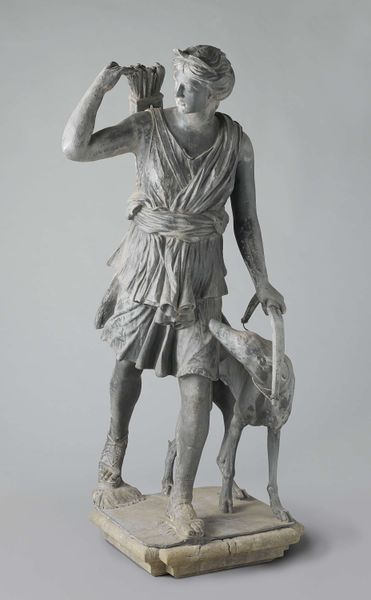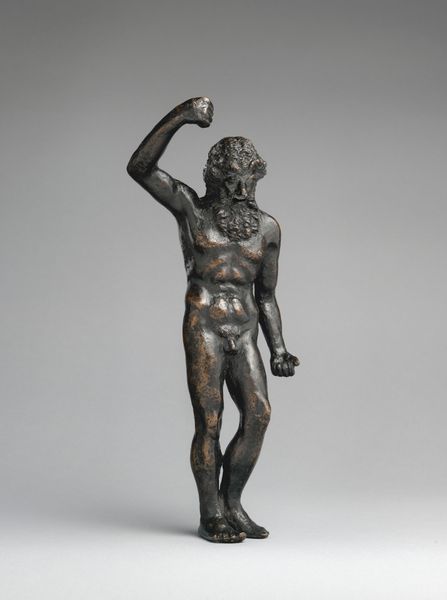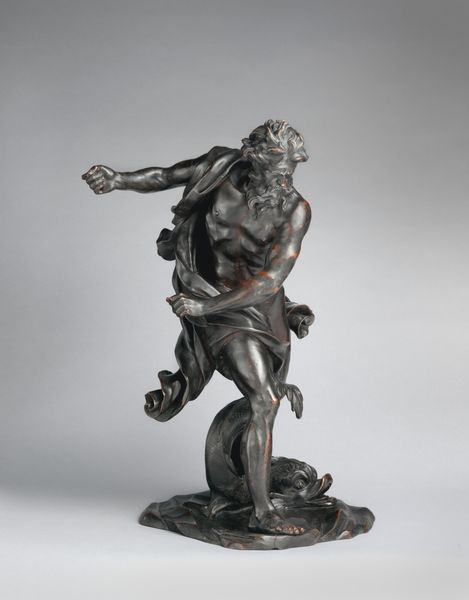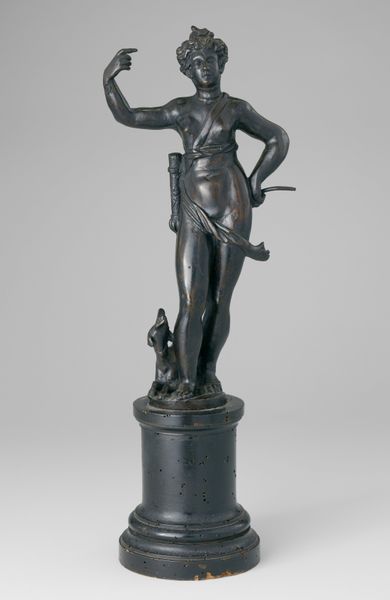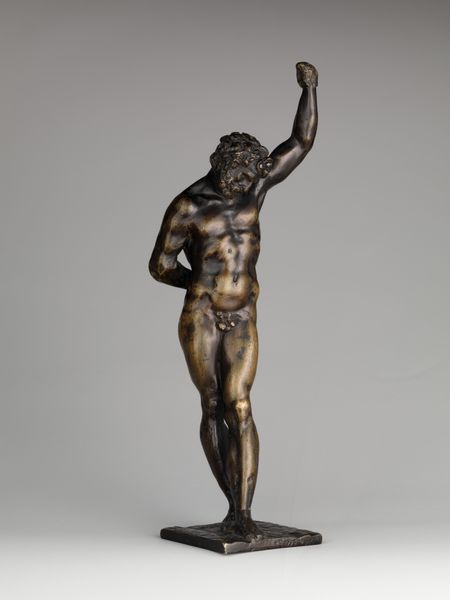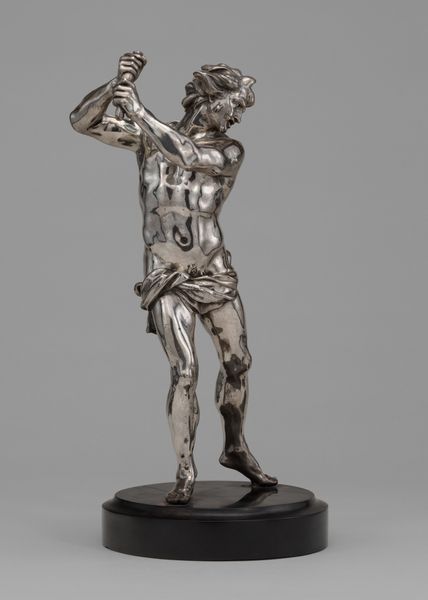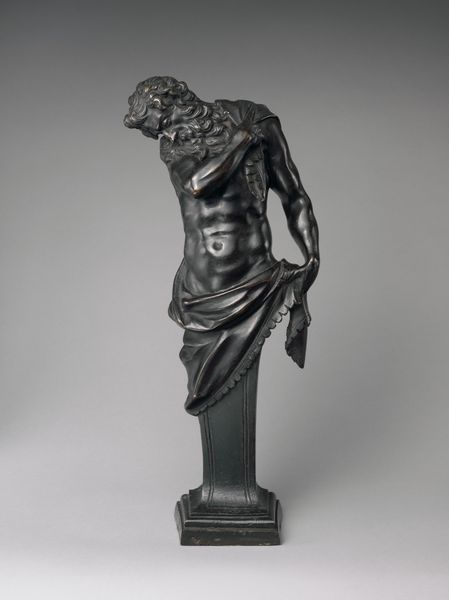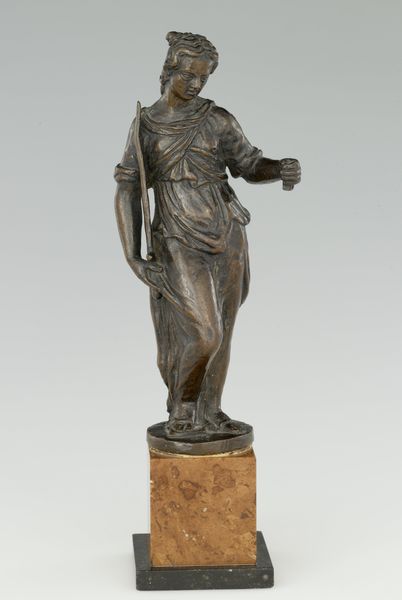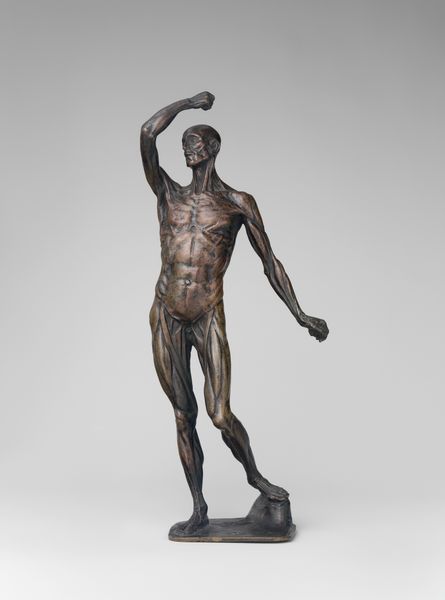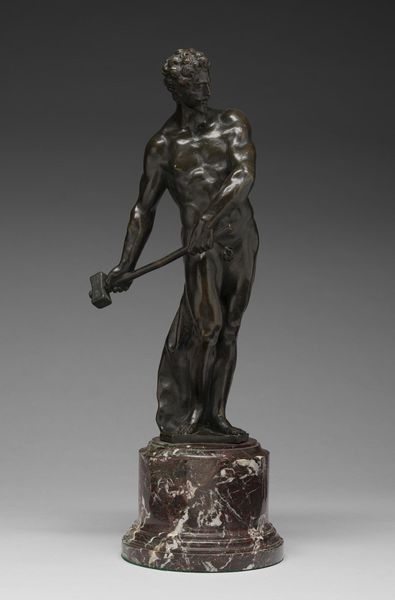
bronze, sculpture
#
portrait
#
bronze
#
figuration
#
sculpture
#
character design
#
decorative-art
#
italian-renaissance
#
christ
Dimensions: Height: 10 1/4 in. (26 cm)
Copyright: Public Domain
Curator: This is "Saint Christopher," a bronze sculpture created by Severo Calzetta da Ravenna sometime between 1500 and 1525, now housed at the Metropolitan Museum of Art. What are your first thoughts? Editor: It exudes such an earthy, almost vulnerable strength. The figure’s pose suggests a plea or perhaps a supplication—challenging traditional narratives of saintly stoicism, really drawing me to questions of gender, the expectations of idealized manhood. Curator: Indeed. Consider Saint Christopher himself – a figure shrouded in legend. He’s often portrayed as a giant, tasked with carrying travelers across a dangerous river, and one day carries the Christ Child, who becomes increasingly heavy, revealing himself as bearing the weight of the world. In the iconographic tradition, the weight transforms Christopher into a vessel. Editor: That's precisely where the activist in me gets activated. We need to unpack the concept of ‘burden,’ the notion that service to some divinely mandated universalism demands literal physical suffering. Where do we see that power dynamic mirrored, reinforced, and resisted today? Curator: Calzetta's depiction beautifully complicates that. The scale here is intimate; it is more of a bronze statuette, not some imposing monument to masculinity and Christian fervor. He’s presented less as a superhuman, but with detailed musculature, but it's tempered with an open hand and an upward gaze filled with… well, with humanity, right? It invites reflection. Editor: Right! So what does it mean to show his humanity during the Italian Renaissance? During this period, figures in the political world like Machiavelli are writing about ruthlessly taking power – but on the other hand we have these images where one may begin to question, through small gestures of humility like his open palms, of how political dominance may change course. This invites us to rethink the period, doesn't it? Curator: Absolutely. Through his very medium, the sheen of bronze over idealized human anatomy suggests continuity between classical and Renaissance values. A figure standing between different eras, carrying both worldly bodies and spiritual weight, the memory and potential transformation of belief itself. Editor: Exactly, the bronze solidifies Saint Christopher within the traditions, but with added humanness he begins to break from tradition; maybe it signals not a departure but an evolution – what it truly means to not just follow belief but question how this plays into what we leave to the world. Curator: A provocative image, ripe for reassessment and reinterpretation, and I thank you for offering your incisive reflections on its historical and contemporary resonance. Editor: And I am grateful for diving so deeply into this remarkable depiction and opening up how icons continue to impact, and interrogate our notions of what we perceive, as belief.
Comments
No comments
Be the first to comment and join the conversation on the ultimate creative platform.
